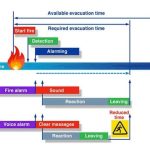Fire Alarm Retrofits Do’s and Don’ts
Existing fire systems may need retrofits for a number of reasons. Learn key tips to retrofitting to keep costs down and your system working.
The 1980’s saw a significant expansion of commercial real estate within the United States. Now, nearly twenty-five years after construction of many of these buildings, significant retrofit activity is often required to maintain these buildings to current safety and efficiency standards. This stock of buildings may be equipped with failing roofs, unreliable fire alarm systems, inefficient mechanical systems, control systems of limited capability and that are no longer supported by the equipment supplier, worn elevator systems and related challenges in other building systems.
Of prime concern to the fire protection engineer is that the life safety system within this stock of buildings now requires attention, and typically some degree of upgrade or replacement of the fire alarm system. This brief article acquaints the fire protection engineer with many of the challenges involved in a fire alarm upgrade or replacement project in an existing building.
[pld_post_list]






